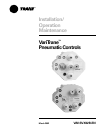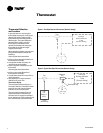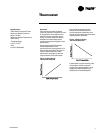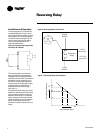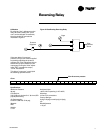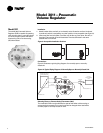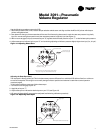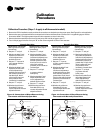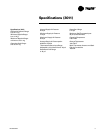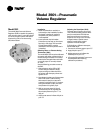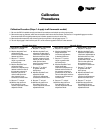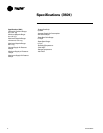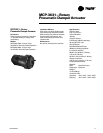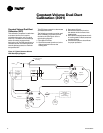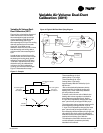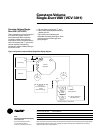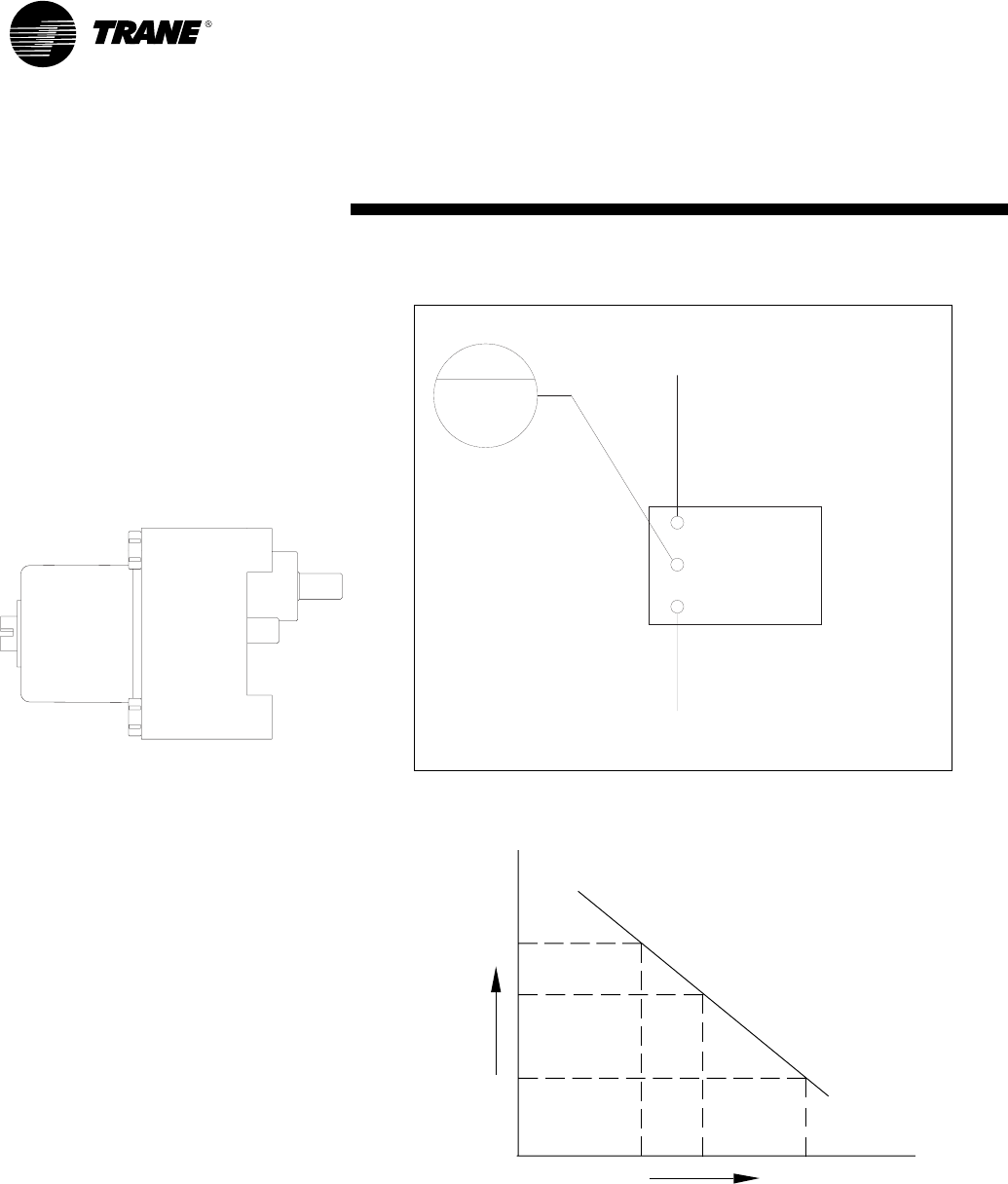
VAV-SVX02B-EN
Installation and Operation
The reversing relay is a proportional,
non-bleeding device for use in pneu-
matic control systems where a propor-
tional signal from a controlling device
must be reversed (see Figure 5). The
most common use of the reversing
relay is to change the action of a
pneumatic thermostat.
Figure 5–Pneumatic Reversing Relay
Trane Part No. RLY-755
Reversing Relay
Figure 6–Reversing Relay Connections
The reversing relay requires three
piping connections: main/supply air,
input signal air, and output branch air
(see Figure 6). The branch line pressure
decreases in direct proportion to an
increase in the input signal pressure
and vice-versa. The input signal is also
amplified, thereby minimizing any
pneumatic line transmission lag
(see Figure 7).
Input pressure to the relay and output
pressure to the PR should always add
up to a constant, which is usually set
between 16 and 25 psi. For example,
with a constant of 18, six-pound input
signal will result in a 12 pound branch
signal. A bias adjustment screw is
provided to retard or advance the out
signal.
4
Figure 7–Reversing Relay Characteristics
20
(137.9)
S
Output
Branch
Input
Branch
Reversing
Relay
B
M
S
9 PSI In
(62.06 kPa)
9 PSI Out
(62.06 kPa)
15
15
12
3
3
6
Input Pressure Signal
Output Branch Pressure
Inc.
Inc.



